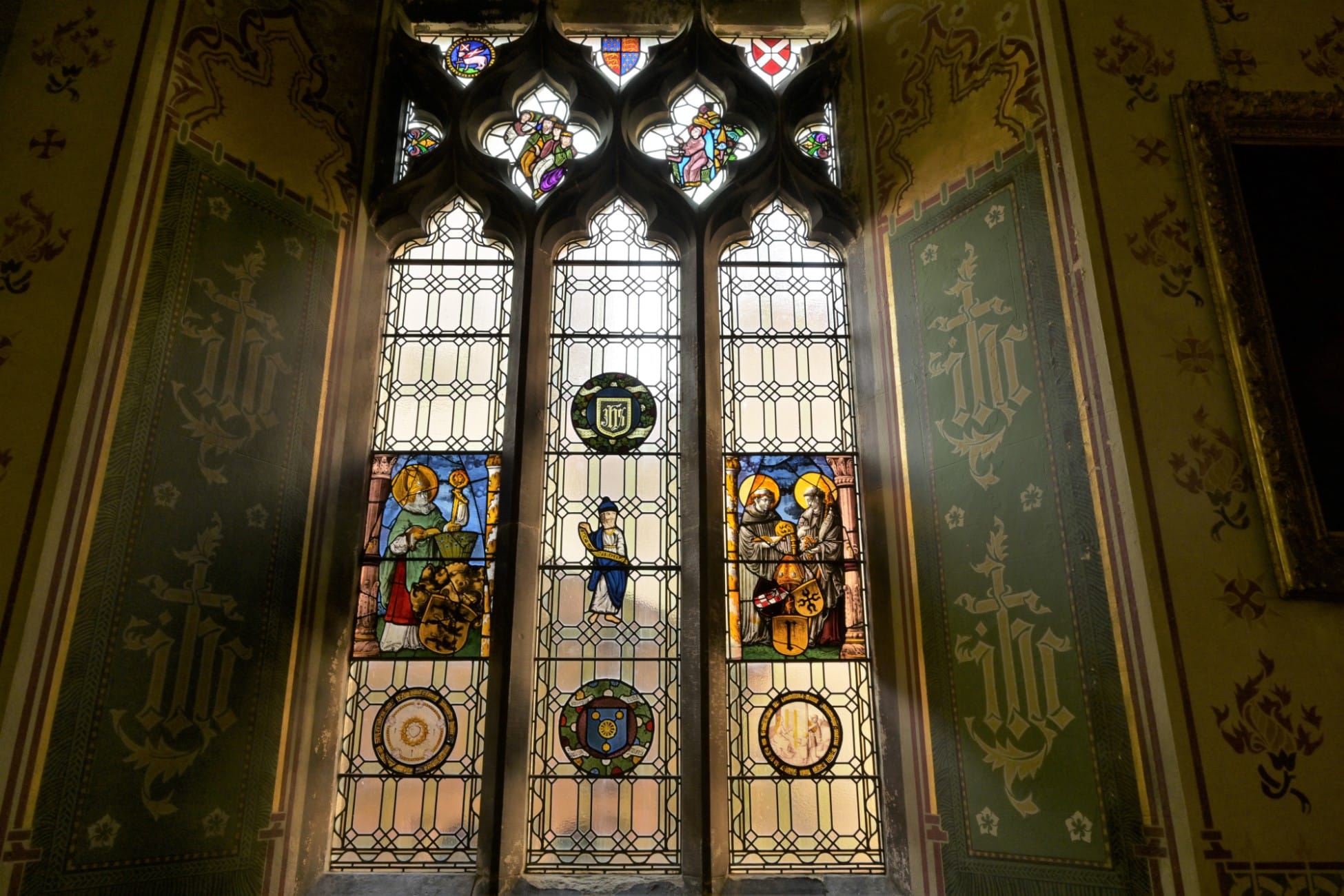Our Chapel at Raby Castle is much loved by visitors. In her first month at Raby Castle, Lauren Foster, our new Interpretation and Engagement Assistant gets to grips with the complex history and architecture of this tranquil space, as part of Historic Houses’ #FeatureFriday. Read on to find out more.
This ancient chapel, which was then in a ruinous and neglected state, was repaired and refitted for divine service by Henry 2nd Duke of Cleveland in 1848. Further restoration and decoration was effected by Henry 9th Baron Barnard in 1901 and 1908.’
-Inscription from Chapel Arcade
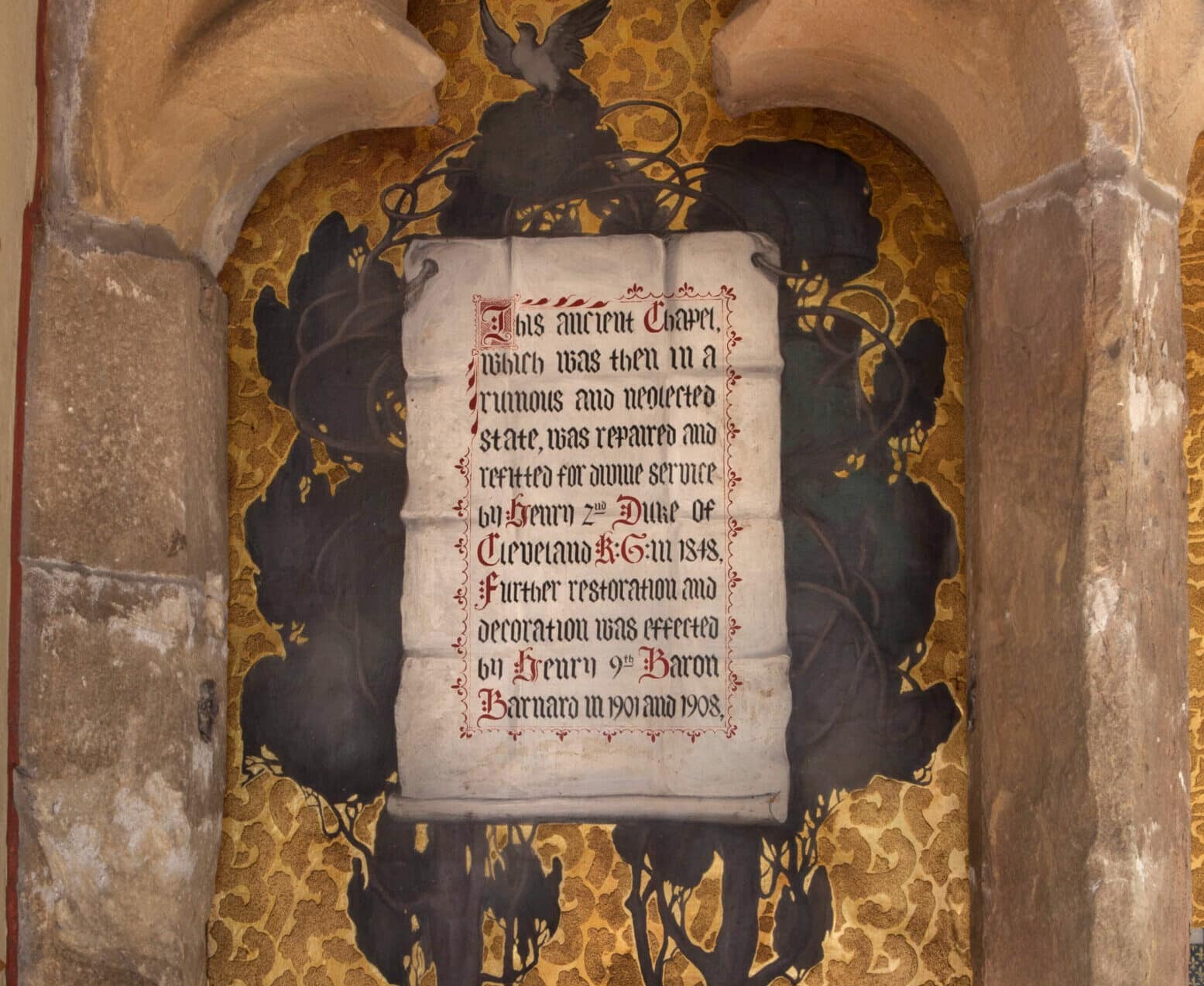
Raby’s Chapel was built during the early 14th century, but has undergone a number of significant changes since. The 4th Duchess of Cleveland, writing in 1870, describes the area as previously ‘entirely neglected, the casements unglazed and boarded up, and even some of the stonework of the windows in a crumbling state. The wild birds roosted and built their nests there, and for those without wings the only possible entrance was by a ladder through one of the windows,’ before the 2nd Duke’s intervention in the 19th century.
The Chapel emphasises the importance of religious service and divine representation to the families who have owned the castle. The architecture and design offer an insight into changing priorities and design preferences throughout generations.
The ribbed vault roof of the chancel features an early vaulting technique, indicating the age of the original Chapel structure. Quadripartite vaulting appeared during the High Gothic period and is found in Cathedrals from the 13th century onwards.
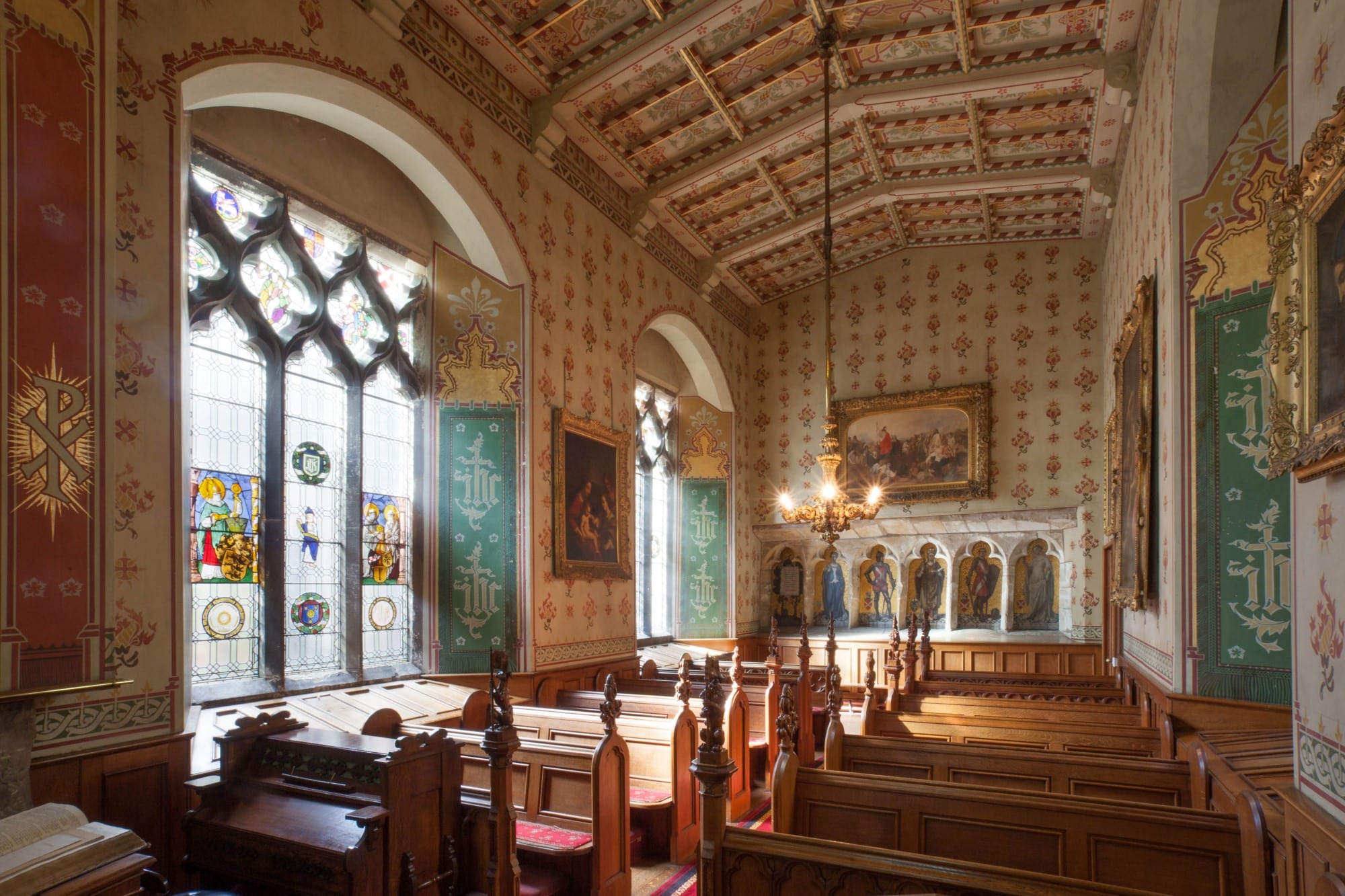
Changes and Restorations
Floors:
In 1780, the floor of the Chapel was raised by architect John Carr during the construction of the carriageway through Entrance Hall below. Whilst considered an ‘unorthodox transformation’ by some, the unique means of accessing the castle provided a strong first impression. In the mid-19th century, following the 2nd Duke’s interest in repairing the chapel, William Burn was entrusted with restoration and lowered the floor again.
Windows:
‘The Chapel… originally lighted by a large five-light window to the west, the tracery of which covered a large part of the wall – some say, nearly the whole of it. This, of course, had to be closed with masonry on the erection of the Baron’s Hall, with the east wall of which it then became incorporated.’
Catherine Lucy Wilhelmina, 4th Duchess of Cleveland, writing in 1870
The window of the South Altar was covered over in the 17th century, and only reopened in 1901 when the East Window was inserted. Plans drawn up in 1899 for the 9th Baron Barnard, emphasise the importance of ‘old stone to be used as far as possible,’ and the restoration to be ‘exact copy of old work.’ The window tracery (the stonework elements supporting the glass in the window) in the south alter window is original but has been heavily restored.
Arcade:
The arcade at the rear of the Chapel would have previously been unglazed, and had wooden shutters to be closed for privacy. They could have been opened for members of the household to watch services from the Baron’s Hall on the other side. The arcade was filled up and is now decorated with early 20th century portraits of important figures from the Neville period.
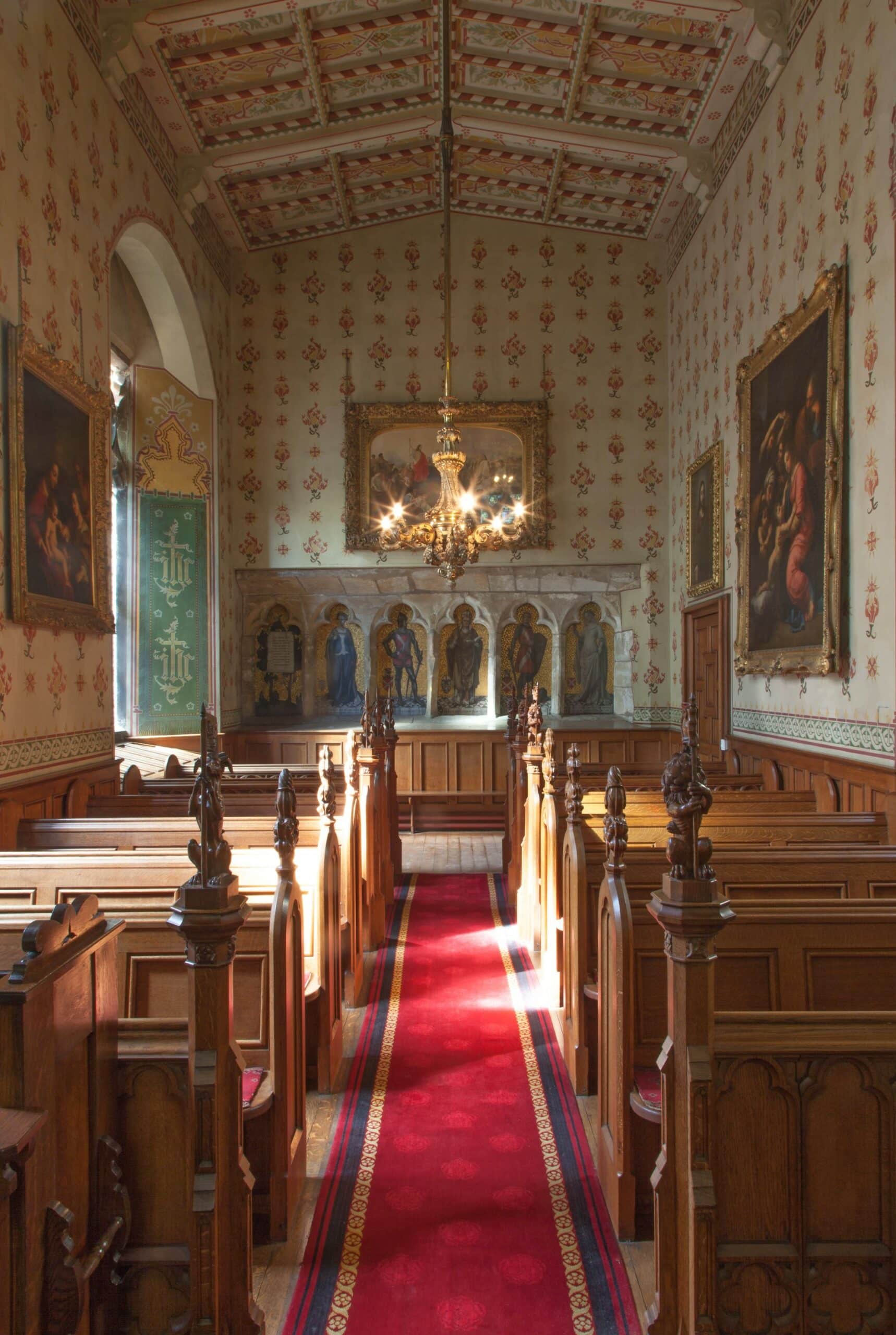
Highlights for visitors to look out for
Some objects and art within the Chapel are of both personal and historic significance to the Raby Family, highlighting themes of remembrance and loyalty.
Memorial cross:
The Memorial Cross within the Chapel commemorates the Honourable Henry Cecil Vane, the eldest son of the 9th Lord and Lady Barnard. Henry was a Captain in the Royal Field Artillery and injured in battle in France during the First World War. He died of his injuries in a Rouen hospital in October 1917 and was buried in the nearby St. Sever cemetery.
Pew ends:
The carved ends of the pews depict heraldic supporters of the Arms of the Duke of Cleveland. These are the figures shown holding up the shield in a coat of arms. In this case, lions and hounds to represent courage and loyalty.
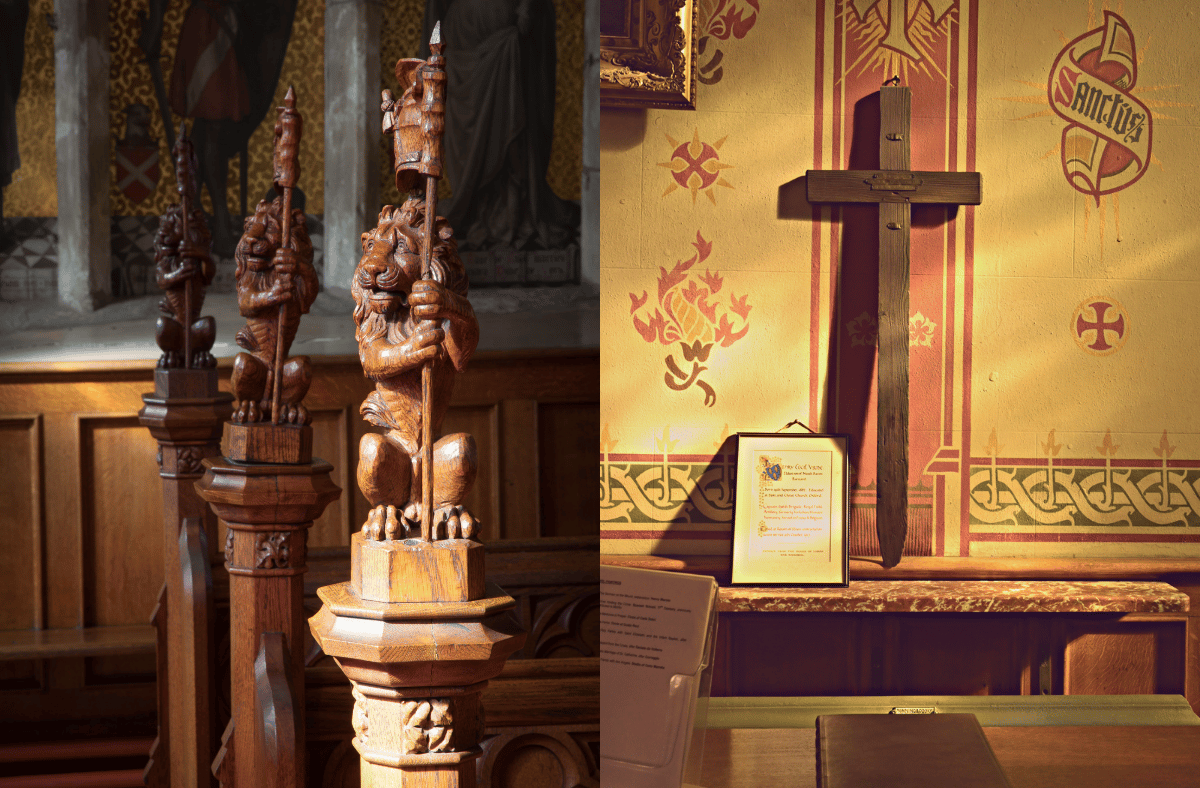
Arcade:
In 1901, the 9th Lord Barnard uncovered the medieval arcade, and commissioned portraits to celebrate Raby during the period of the Neville family. The artist took inspiration from tomb effigies and stained-glass windows to try and make accurate depictions of the historic figures. Though more contemporary, these images offer an important representation of the Neville family. Very little evidence exists in the castle from the time of the Nevilles, after losing the castle due to the failed Rising of the North.
Ralph Neville, 1st Earl of Westmorland (1364-1425)
Born at Raby Castle, Ralph Neville played a significant role in the defence of the northern border, as well as in determining the course of the monarchy under King Richard II and King Henry IV. The Earl of Westmorland is also portrayed in Shakespeare’s Henry plays as being influential in many strategic military manoeuvres. His effigy in Staindrop church depicts him in between his two wives.
Joan Beaufort, Countess of Westmorland (1379-1440)
Ralph Neville’s second wife and daughter of John of Gaunt, father of Henry IV. Her marriage to Ralph Neville produced nine children who survived into adulthood, including Cecily the ‘Rose of Raby.’ By the time of her death, Joan was the mother of an earl, three barons, a countess, three duchesses and a bishop.
Thomas Hatfield, Bishop of Durham (c1310- 1381)
One of the last warrior bishops, he served under Edward III. In 1378 he granted John Neville, 3rd Baron Neville, permission to fortify his property at Raby. This gave him licence to ‘make a castle of his manor of Raby, and to embattle and crenelate its towers.’
John Neville, 3rd Baron Neville (c. 1337- 1388)
Father of Ralph Neville. The fortification and expansion of Raby Castle begun under Lord John, who served as Admiral of the North. He played a key role in peace negotiations with Scotland in the 1380s.
Cecily Neville, Duchess of York (1415-1495)
Wife of Richard, Duke of York and mother of Kings Edward IV and Richard III. Born at Raby Castle, Cecily bore twelve children and weathered the Wars of the Roses. Her granddaughter Elizabeth of York married the Tudor King Henry VII in 1486, meaning all subsequent English and British monarchs are descendants of Cecily and Richard. (You can find out more about the ‘Rose of Raby,’ including her famous betrothal, in our other blogs.)
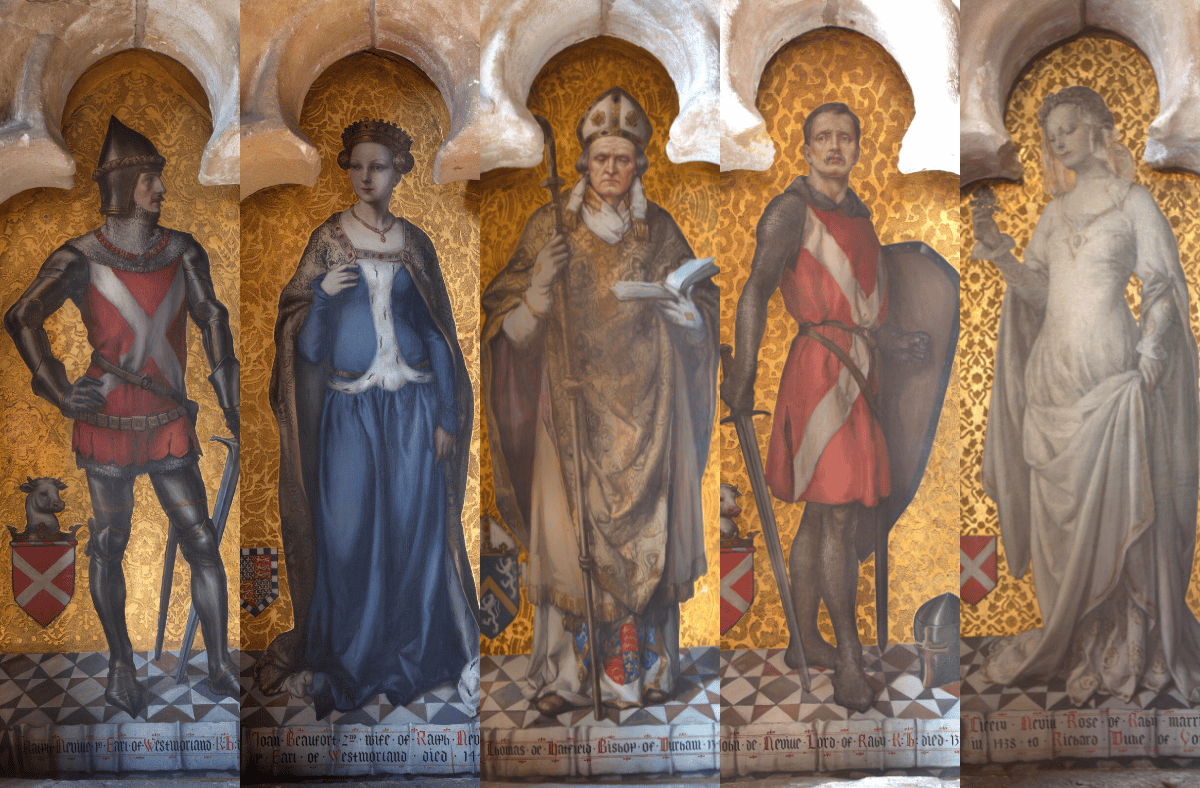
From left to right, Ralph Neville, Joan Beaufort, Thomas Hatfield, John Neville and Cecily Neville.
Stained Glass:
The Chapel contains some impressive early stained glass ranging from 12th century French glass from the Abbey of St. Denis, an ancient burial place of French monarchs, to 16th century German. Others were inserted by the 9th Lord Barnard as part of renovations in the early 20th century. It is still a mystery as to how the early glass found its’ way to Raby Castle.
The below pictures show stained glass depicting the Arms of the Dukes of Cleveland (first image), and the Arms of the Nevilles (second image).
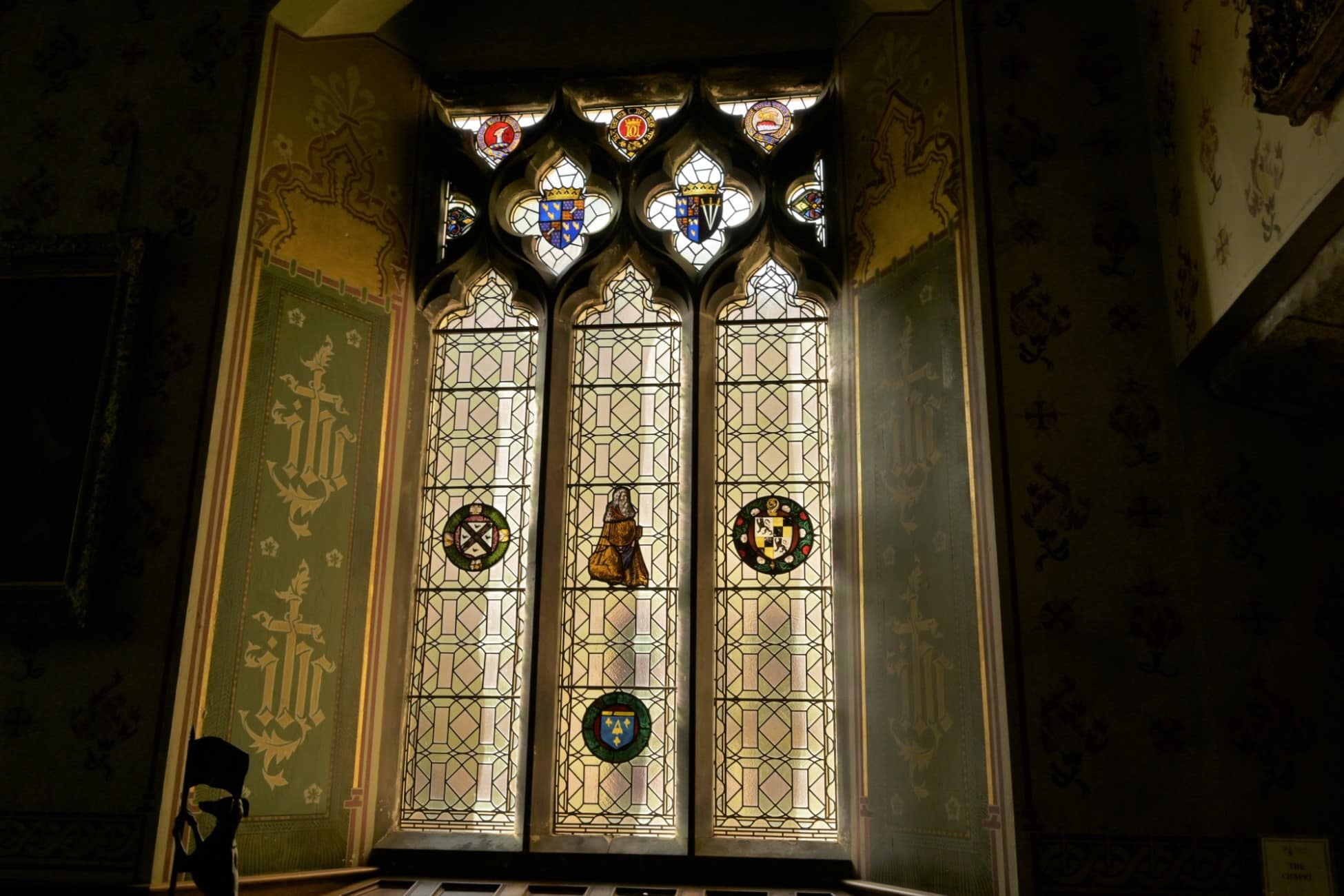
The middle figure below is The Prophet Isaiah proclaiming the birth of Christ. This is from the Abbey Church of St. Denis in France, dated 12th century. He is flanked by two 16th century Swiss panels from a church at Mettmenstetten, near Zurich. The left shows St. Leogardus, a 7th century Burgundian bishop and martyr. The right depicts St. Bernard, the founder of the Cistercian order and St. Robartus, who later reformed it.
